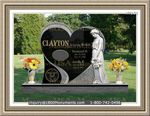|
Understanding The Facts Of Planning For Funeral Service
When a loved one passes away it can be an emotionally trying time. If prior arrangements were not made or clear instructions left, a family member is responsible for the interment proceedings. Before planning a funeral service, remember that though everyone is grieving, this is an opportunity to celebrate the life of a dear individual.
The first step is choosing through which funerary establishment the arrangements will be made. They usually assign an event coordinator to walk the family through the process. Their purpose is to advise on things such as making sure all the legal documents are completed, creating the obituary, picking a casket or urn, and all the little details that go into the memorial and interment services.
It is also necessary to decide who will be conducting the proceedings. Traditionally, it would be the deceased's minister or spiritual leader. If they were not associated with any particular group of that type, the position may be given to another cleric or perhaps to someone who was close to the individual and knew them quite well.
Once the officiant is chosen, the venue is next. The coordinator can assist in finding a location in which to hold the proceedings. They are also well versed in arranging casket and floral displays, setting up video and audio, creating memorial handouts and suggesting appropriate verses, passages, poems and music for the occasion.
Some of the bereaved may wish to contribute to the final tribute by sharing special memories. The eulogy is perhaps the most difficult aspect of the preparation process since it will generally evoke a lot of emotion. This is a heartfelt speech, lasting approximately five minutes, in which the deceased's life is summarized and their special attributes honored.
A lot goes into arranging a funeral service, which should be no longer than an hour. Providing a guest book lets the family know who attended as well as read the messages they leave behind. Have a place to display photos and other memorabilia as a tribute, and provide a memorial handout as a commemorative keepsake.
|
|



























